Home Oxygen 2-U is a company that provides oxygen therapy equipment and services to individuals who require supplemental oxygen at home. With over 20 years of experience in the industry, Home Oxygen 2-U is dedicated to providing safe and convenient solutions for patients with respiratory conditions.
Oxygen therapy is an essential treatment for individuals with respiratory conditions such as chronic obstructive pulmonary disease (COPD), emphysema, and asthma. It involves delivering oxygen through a mask or nasal cannula to help patients breathe easier and improve their quality of life.
Without adequate oxygen levels, patients may experience shortness of breath, fatigue, confusion, and other symptoms that can significantly impact their daily activities. Oxygen therapy can help alleviate these symptoms and improve overall health outcomes.
Home Oxygen 2-U offers a wide range of oxygen therapy products to meet the unique needs of each patient. Some of the products offered include:
The company also offers accessories such as humidifiers, filters, and carrying cases to make using oxygen therapy more comfortable and convenient for patients.
There are many benefits to choosing Home Oxygen 2-U for your oxygen therapy needs:
If you have a respiratory condition such as COPD, emphysema, or asthma, your doctor may recommend oxygen therapy if your blood oxygen levels are low. A simple test called a pulse oximetry can measure your blood oxygen levels and determine if you need supplemental oxygen.
Home Oxygen 2-U offers a wide range of equipment including oxygen concentrators, tanks, nasal cannulas, masks, and tubing. They also offer accessories such as humidifiers, filters, and carrying cases.
You can contact Home Oxygen 2-U by phone or email to schedule a consultation. The company will work with you and your doctor to determine the best oxygen therapy solution for your needs. They also offer home delivery and setup of equipment for added convenience.
Oxygen therapy is an essential treatment for individuals with respiratory conditions. Home Oxygen 2-U is dedicated to providing safe and convenient solutions for patients who require supplemental oxygen at home. With high-quality products, expertise, and ongoing patient support, Home Oxygen 2-U is a trusted provider of oxygen therapy equipment and services.
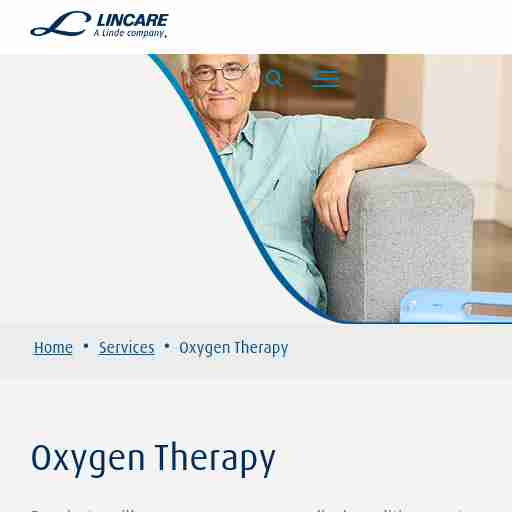
Nocturnal Oxygen. Sleep disruption can be a symptom of respiratory conditions. Your practitioner may prescribe nocturnal oxygen treatment if you regularly wake ... Respiratory illnesses are common medical conditions, yet being diagnosed with one can still be overwhelming. Fortunately, treatment options and oxygen supplies are available so you can continue living life on your terms. At Lincare, we're committed to providing you the oxygen treatment (as prescribed by your provider) that works best for your lifestyle, healthcare needs, and other factors. Our oxygen products include oxygen concentrators, portable oxygen systems, and high-pressure cylinders. The Lincare name is synonymous with state-of-the-art oxygen supplies, and delivering quality patient care is our top priority. LEARN HOW TO GET STARTED WITH OXYGEN THERAPY TODAY Sleep disruption can be a symptom of respiratory conditions. Your practitioner may prescribe nocturnal oxygen treatment if you regularly wake up with a headache or feel overly tired during the day but don't require full-time oxygen support. Our nighttime solutions can help you feel more alert and reduce daytime fatigue by preventing breathlessness that interrupts your sleep cycle. LEARN MORE IN THE PATIENT'S GUIDE TO OXYGEN THERAPY Oxygen Therapy Treats Conditions Including: Amyotrophic Lateral Sclerosis (ALS) A progressive neurodegenerative disorder that affects nerve cells in the brain and spinal cord. Periodic inflammation and narrowing of the airways. Persistent inflammation of the bronchial tubes. Chronic Obstructive Pulmonary Disease (COPD) Inflammatory disease that impacts oxygenation. A disease that destroys the lungs' air sacs.
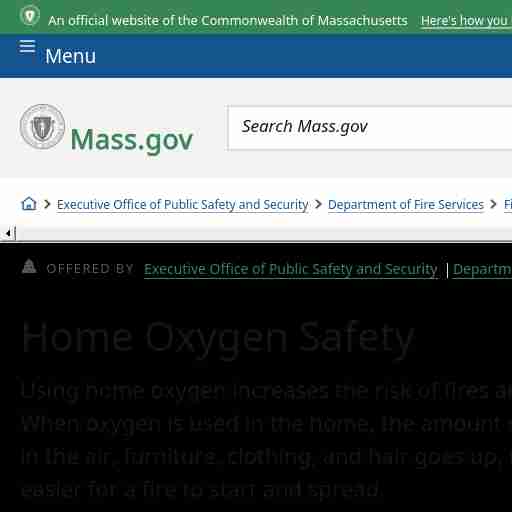
If you or a loved one uses home oxygen · Do not smoke · Make sure the home has working smoke alarms. · Have a home fire escape plan with a minimum of 2 ways out of ... An official website of the Commonwealth of Massachusetts Here's how you know Executive Office of Public Safety and Security Department of Fire Services Fire Safety for the Public Home Oxygen Safety THIS PAGE, HOME OXYGEN SAFETY, IS OFFERED BY Executive Office of Public Safety and Security Using home oxygen increases the risk of fires and burns. When oxygen is used in the home, the amount of oxygen in the air, furniture, clothing, and hair goes up, making it easier for a fire to start and spread. As more and more people are bringing medical oxygen into the home, they need to understand the new fire risks they also bring into the home. Physicians and other caregivers play a key role in educating patients about the safe use of oxygen. If you or a loved one uses home oxygen Make sure the home has working smoke alarms. Test them monthly. Have a home fire escape plan with a minimum of 2 ways out of every room and an outdoor meeting place. Practice the plan at least twice a year. Keep oxygen and tubing 10 feet away from heat sources such as candles, matches, lighters, heaters, wood stoves, electric razors, hair dryers, cooking stoves, and smoking materials. Do not use petroleum-based products such as oil-based lip balms or lotions. They catch fire easily. Using home oxygen increases the risk of fires and burns. Using home oxygen increase the amount of oxygen in air, furniture, bedding, clothing and hair, making it easier for a fire to start and spread. When more oxygen is in the air, fires burn hotter and faster.
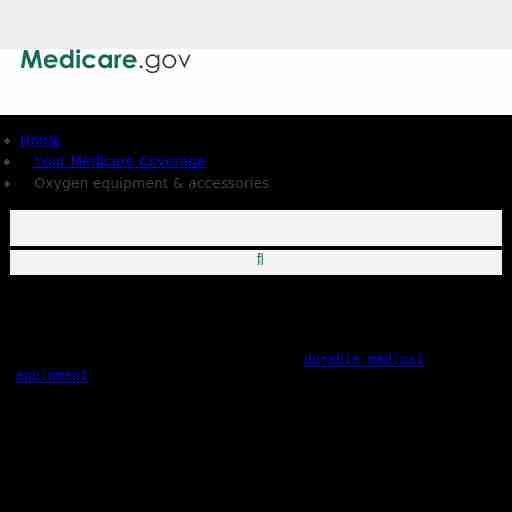
Oxygen machine repairs. If you use either an oxygen concentrator or equipment used to fill portable tanks in your home, you may have to make coinsurance ... Oxygen equipment & accessories Medicare Part B (Medical Insurance) covers the rental of oxygen equipment and accessories as durable medical equipment (DME) that your doctor prescribes for use in your home. Your costs in Original Medicare After you meet the Part B deductible , you pay 20% of the Medicare-approved amount . If you have Medicare and use oxygen, you’ll rent oxygen equipment from a supplier for 36 months. What happens if my oxygen supplier goes out of business or leaves the program during my rental period? The monthly rental payments cover your oxygen equipment, along with any oxygen-related accessories and services like: Any other necessary supplies and accessories, including a trans-tracheal oxygen catheter (if needed) If you use either an oxygen concentrator or equipment used to fill portable tanks in your home, you may have to make coinsurance payments for maintenance and servicing of the equipment every 6 months if the supplier comes to your house to inspect and service the equipment. The supplier can’t charge you for this service unless they come to your home to inspect and service the equipment. What happens after I rent my equipment for 36 months? As long as you have a medical need for oxygen, your supplier must continue to maintain the oxygen equipment (in good working order) and provide related supplies for an additional 24 months, up to a total of 5 years. The supplier can’t charge you for performing these services. What if my supplier refuses to continue providing my liquid oxygen, oxygen equipment, or related services as required by law?
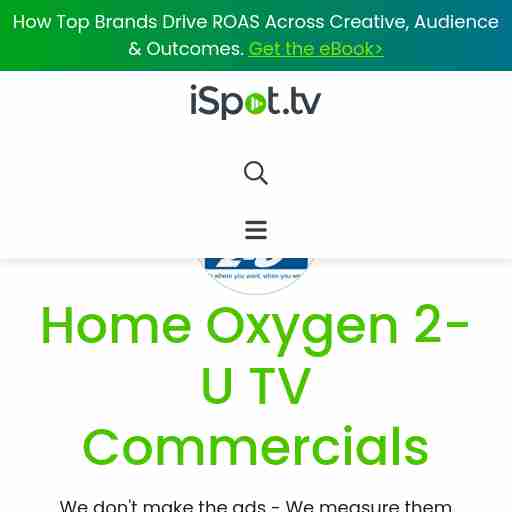
Watch, interact and learn more about the songs, characters, and celebrities that appear in your favorite Home Oxygen 2-U TV Commercials. How Top Brands Drive ROAS Across Creative, Audience & Outcomes. Get the eBook> We don't make the ads - We measure them Sign up to track 6 nationally aired TV ad campaigns for Home Oxygen 2-U. In the past 30 days, Home Oxygen 2-U has had 27 airings and earned an airing rank of #2,460 with a spend ranking of #2,163 as compared to all other advertisers. Competition for Home Oxygen 2-U includes Inogen, Clean Zone, Open Aire, Go2POC, LifeChoice Oxygen and the other brands in the Pharmaceutical & Medical: Supplies industry. You can connect with Home Oxygen 2-Uby phone at 1-800-517-8053. Home Oxygen 2-U Portable Oxygen Concentrator TV Spot, 'Beach' Home Oxygen 2-U TV Spot, 'Keep Going' Home Oxygen 2-U OxyGo FIT TV Spot, 'Where Do You Go' Home Oxygen 2-U LifeChoice Activox TV Spot, 'More Abilities' Home Oxygen 2-U TV Spot, 'I Can' Home Oxygen 2-U TV Spot, 'Farm Animals' Pharmaceutical & Medical TV Ad Resources Sports Ad Measurement Buyer’s Guide for Brands How an Automotive Brand Cut Over $2 Million in Wasted Ad Spend Choose A Better Way To Measure TV ROAS Certified as a National Currency by the U.S. Joint Industry Committee National TV Ad Occurrence Reporting Accredited by Media Rating Council (MRC) California Residents exercise your rights under the California Consumer Privacy Act here. Do Not Sell My Personal Information © 2024 iSpot.tv, Inc. Terms & Privacy
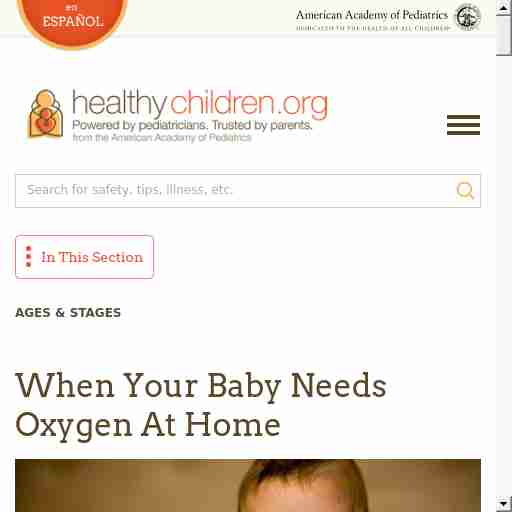
Aug 3, 2020 ... The machine alerts you when your baby's breathing rate slow or heart rate drops, which could be a sign of respiratory distress. A pulse oximeter ... When Your Baby Needs Oxygen At Home By: Folasade I Kehinde, MD, MPH, FAAP Chronic respiratory conditions can cause levels of oxygen in the blood to drop too low. When this happens, it is called hypoxemia. Children with hypoxemia may need to have oxygen therapy at home once they are discharged from the hospital. This helps them maintain normal blood oxygen levels so they can stay healthy. Like a fever, hypoxemia is a symptom of an underlying condition--not an illness itself. It can be caused by a variety of conditions and illnesses, not just respiratory ones. Some of the chronic respiratory conditions that can cause hypoxemia include: Sleep-disordered breathing (sleep apnea) Pulmonary hypertension with or without congenital heart disease Children who are (or were) dependent on a ventilator for breathing If it is left untreated, hypoxemia can create issues like: Dangerous drop in heart rate (bradycardia) Short periods of not breathing (apnea) Babies who are medically stable and whose parents have been trained can be sent home on oxygen to prevent hypoxemia. Being at home benefits both your child's and your family's emotional health. Caring for your baby at home also helps reduce healthcare costs. For home use, most babies get oxygen through a nasal cannula, a small tube that fits in your baby's nostrils and secures around the head. In a small number of babies, oxygen is delivered through a tube in the neck called a tracheostomy, a continuous positive airway pressure (CPAP) machine or a ventilator.